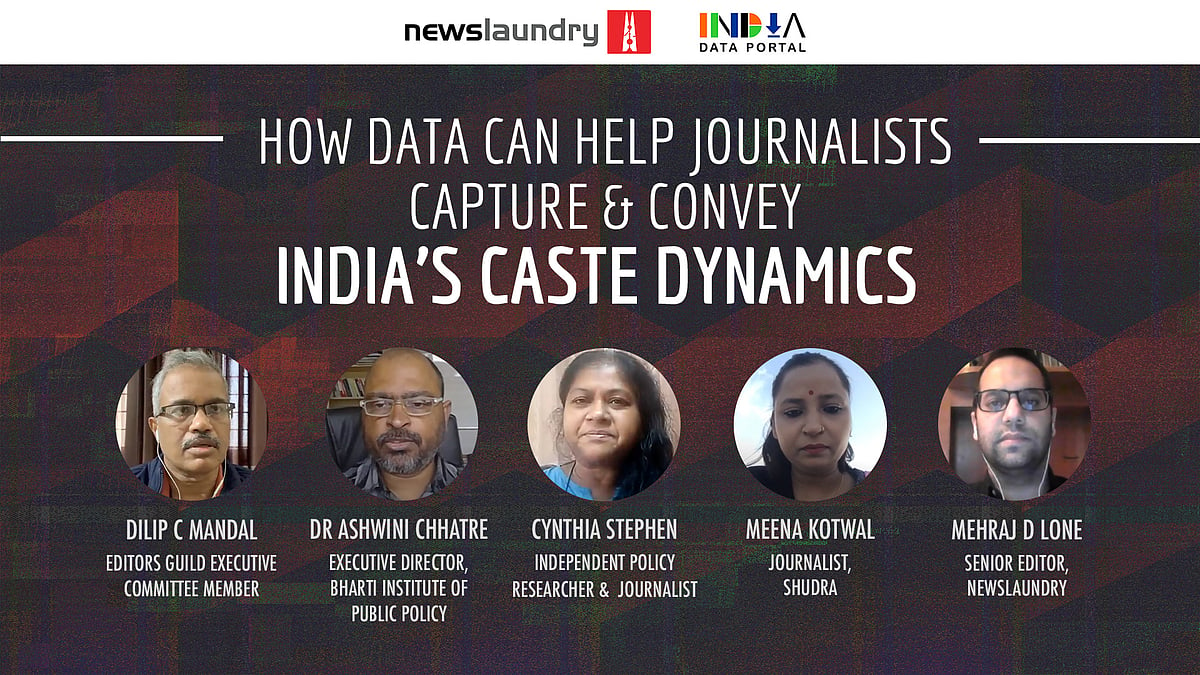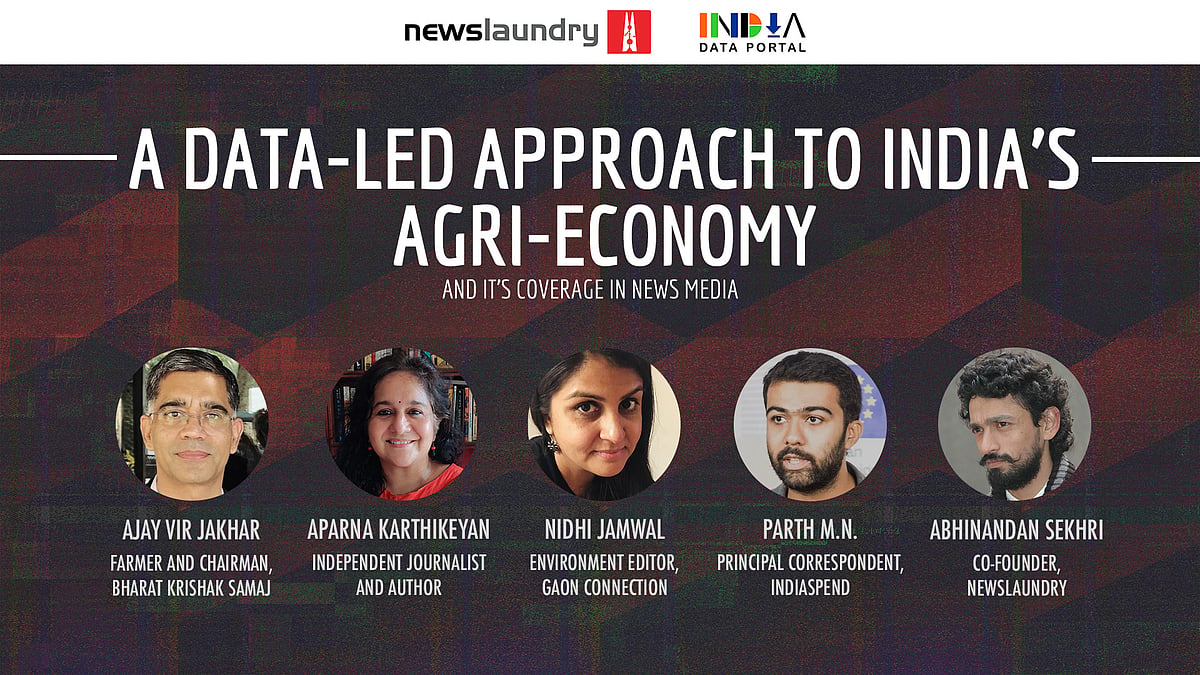Webinar: How data can help report on India’s gender gap
A webinar series by Newslaundry and India Data Portal.
Newslaundry, in collaboration with the India Data Portal project of the Bharti Institute of Public Policy, ISB, is organising a series of monthly webinars on specific datasets created by the platform, an open-access portal for journalists to use, interact with, and visualise information, data and knowledge on agriculture and financial inclusion.
The fourth webinar, titled “How Data can help Report on India’s Gender Gap”, was organised on January 4, 2021.
Moderated by Jayashree Arunachalam of Newslaundry, the webinar included as panellists Japleen Pasricha, founder and director, Feminism In India; Sonakshi Chaudhry, trustee, Women of the Elements Trust; Vignesh Radhakrishnan, data reporter, the Hindu; and Anjal Prakash, research director and adjunct associate professor, Indian School of Business. Afrida Hussain, founder and editor, InsideNE, was unable to join due to unforeseen circumstances.
Introducing the topic, Jayashree explains how women have historically been under-represented in different sectors and why it is important to analyse this.
The webinar began with a presentation by Aarushi Jain, associate director, ISB, on how the gender disaggregated data collected by the Indian Data Portal can help analyse the gender gap in sex ratio, literacy, unemployment, and wages.
Japleen emphasises the need for journalists to interpret information rather than just report it. By way of an example, she says the Dunzo app reported that during the coronavirus lockdown pregnancy test kits and contraceptive pills were among the best selling products on the app. It was a time when India saw an increase in domestic violence. “What the journalists can do here is not just report the datapoint but also analyse what this actually means,” she adds.
While acknowledging the importance of interpreting data, Vignesh points out that comprehensive data is often not available. He says, “Sometimes just putting out data there will be much revealing as it will break stereotypes.”
Anjal explains that the mismatch between what one collects and what one deciphers when it comes to data on women is where scholars on gender get stuck and are forced to use proxy indicators to fill up gaps in the data available.
The panellists also discuss the need to question the government over the lack of data. They also maintain that the intersectionality of gender with caste and class must reflect in the media’s reporting.
The webinar ends with the panellists answering a range of questions from the audience on the gender gap, the invisibility of women in the public sphere, and so on.
Text by Rebecca Rose Varghese.
 Webinar: How data can help journalists better cover caste in India
Webinar: How data can help journalists better cover caste in India  Webinar: How India’s media covers agriculture and how a data-led approach can help
Webinar: How India’s media covers agriculture and how a data-led approach can help